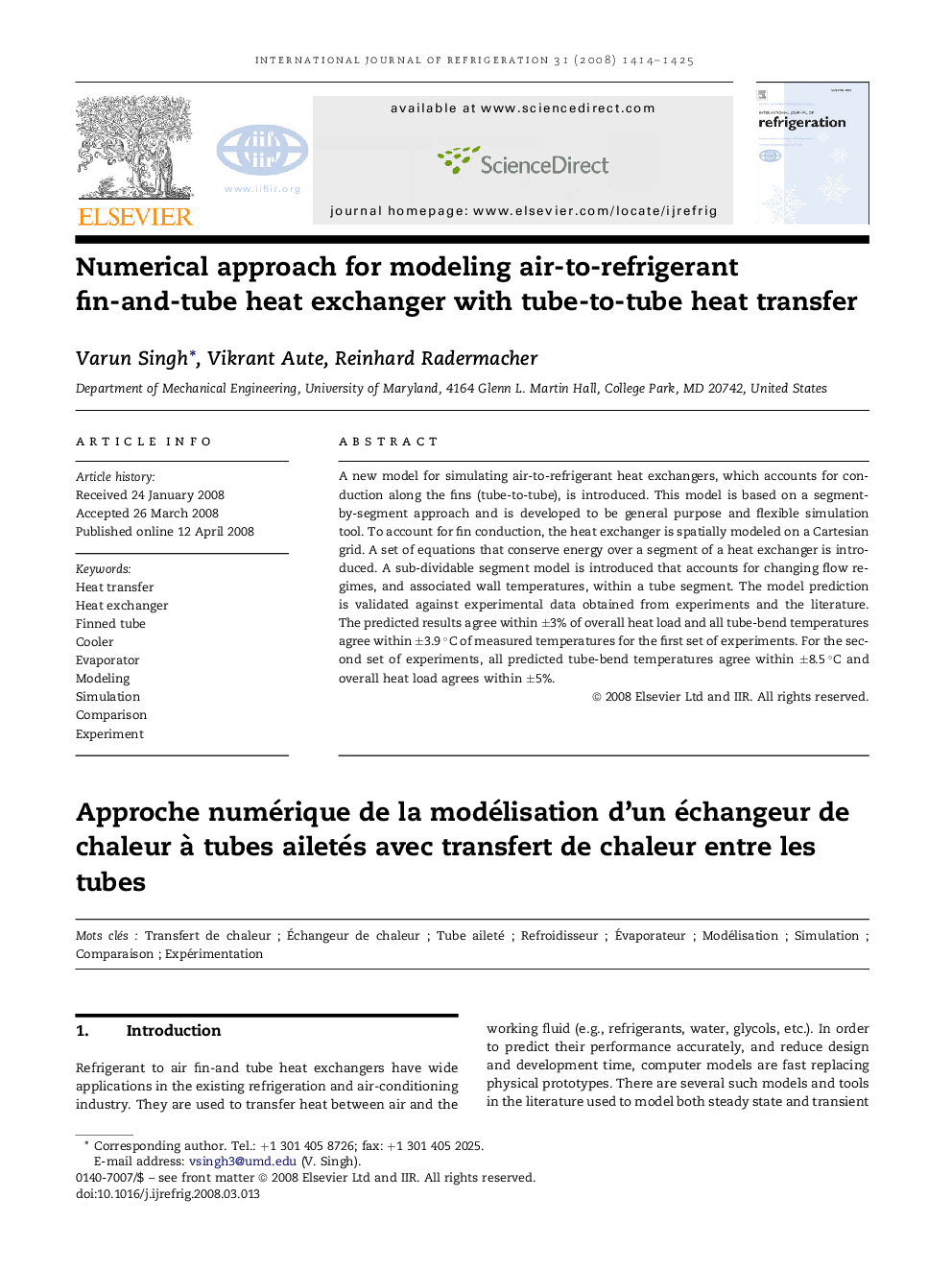| Article ID | Journal | Published Year | Pages | File Type |
|---|---|---|---|---|
| 787420 | International Journal of Refrigeration | 2008 | 12 Pages |
A new model for simulating air-to-refrigerant heat exchangers, which accounts for conduction along the fins (tube-to-tube), is introduced. This model is based on a segment-by-segment approach and is developed to be general purpose and flexible simulation tool. To account for fin conduction, the heat exchanger is spatially modeled on a Cartesian grid. A set of equations that conserve energy over a segment of a heat exchanger is introduced. A sub-dividable segment model is introduced that accounts for changing flow regimes, and associated wall temperatures, within a tube segment. The model prediction is validated against experimental data obtained from experiments and the literature. The predicted results agree within ±3% of overall heat load and all tube-bend temperatures agree within ±3.9 °C of measured temperatures for the first set of experiments. For the second set of experiments, all predicted tube-bend temperatures agree within ±8.5 °C and overall heat load agrees within ±5%.
